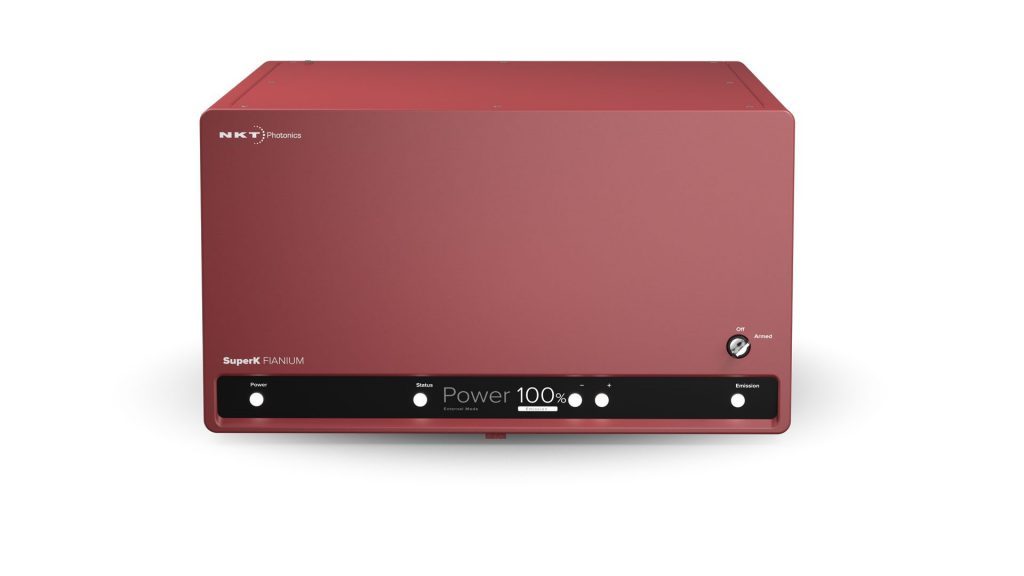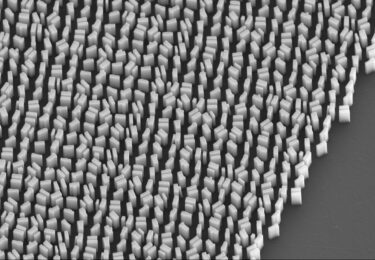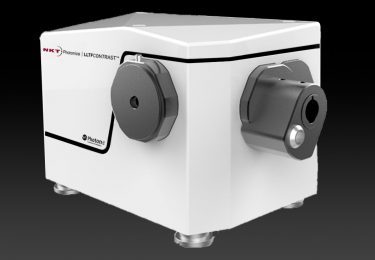What are nanostructures?
Nanostructures simply refer to physical structures with features on a nanometer scale. Structures relevant for optical characterization include such diverse fields as:
- Metamaterials
- Graphene and carbon nanotubes
- Photonics bandgap structures
- Surface plasmon waveguides
- Nanofibers, spheres, rods, etc.
- Quantum dots
How can I use a SuperK for nanostructure characterization?
Have you ever needed a different wavelength, wider tunability or a more convenient, stable or reliable light source? Then the SuperK white light laser is for you.
The SuperK advantages
- Tune and interrogate any structure or resonance (380-2400nm)
- Single-mode diffraction-limited output ideal for small structures
- Stable power and excellent pointing stability of the beam
- Active compensation for drift in setup via Power Lock
- Reliable and easy to use with zero maintenance
The SuperK supercontinuum laser can give you light anywhere in the 380-2400 nm region, making it a great tool for the optical characterization of nanostructures. Many researchers around the World use the SuperK for measurements of nanoparticles, plasmonic waveguides, metamaterials, and other small structures.
The lasers are compatible with various characterization techniques like Raman spectroscopy, Brillouin light scattering spectroscopy, spectroscopic ellipsometry, SNOM, and s-SNOM which replace single-line lasers and traditional broadband sources.
Stability is the key
When characterizing very small structures, the stability of the light source is critical (e.g. for coupling to plasmonic waveguides).
As the only supercontinuum source on the market, the SuperK FIANIUM comes with our unique Power Lock feature that lets you lock the power anywhere in your setup. This lets you compensate for drift and instabilities in mirrors, lenses, etc., and gives you power stability at your sample in the 0.2-0.5 % range.
Power stability is important, but without good pointing stability of the beam, it is worthless. The SuperK FIANIUM has the best pointing stability on the market and is single-mode in the entire spectral range of the source.
You get a stable transmission through our filtering accessories but also a stable coupling to your sample resulting in less noise and better measurements.
A SuperK supercontinuum source can replace all of the following light sources:
- ASE sources
- Lamps
- Single-line lasers
- SLEDs
- Dye lasers
ARTICLES AND BACKGROUND INFO
- Article by Mark L. Brongersma, published in Nano Letters: Resonant Germanium Nanoantenna Photodetectors
- Article by Mark L. Brongersma, published in Nano Letters: A submicron plasmonic dichroic splitter
- Article by Mark L. Brongersma, published in Nature Photonics: An invisible metal-semiconductor photodetector
- Article by Mark L. Brongersma, published in Nature Materials: Engineering light absorption in semiconductor nanowire devices
- Article by Mark L. Brongersma, published in the New Journal of Physics: Engineering light absorption in single-nanowire solar cells with metal nanoparticles















